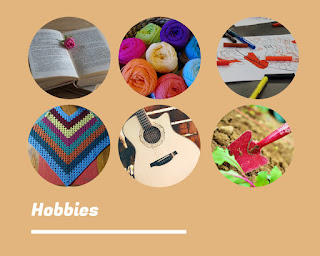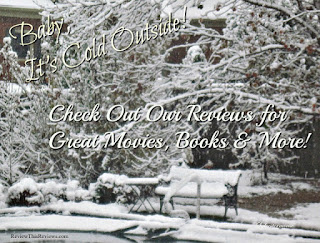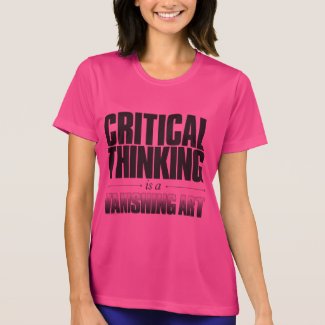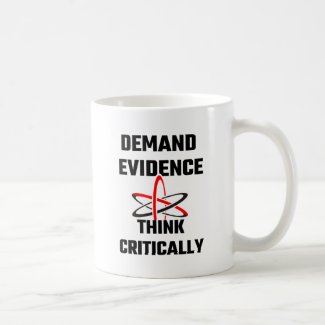 |
| His Gift Was Knowing - A Short Story by Barbara Tremblay Cipak |
Sunday, January 24, 2021
His Gift Was Knowing - A Short Story
Sunday, November 8, 2020
Basic Tips I Learned on My Self-Publishing Journey
 |
| Self-Publishing Tips for Newbies |
Let me start by saying that I'm NOT a self-publishing guru. I'm just a work-from-home-self-taught woman who decided to jump in and tackle some of those dreams left dying on the table.
I've written quite a bit here on ReviewThisReviews about self-publishing books. You'll find a list of the links below.
To date, I've self-published eight books and am currently writing the ninth.
The topic of the books are Riddles, Poetry, and Sayings for Cards. Currently, I'm focussed on building a series of Riddle Books. There are five riddle books in the series and the sixth should be published in one to two months.
A General Overview of What to Do When You Self-Publish (According to my Personal Journey)
- Amazon Author Page: Once you've published your book, complete a detailed page about yourself on Amazon's Author Central Page. Here's Amazon's author central page for the USA. When publishing my books, I had to create author central pages for the UK and USA separately. Perhaps, Amazon will amalgamate things at some point, so we only have to do it once. Here's the UK author central page in case you need it.
- Amazon Author Page Photo: Decide whether your Author Central page will feature a Logo or your personal photo. At first, I put up my logo but changed it to my personal photo. I prefer to emphasize that I'm just a regular person, not a 'big company.'
- Build a Website that Relates to Your Books: If you've never built a website or can't, you can hire someone or just build a blog related to your books. I've built websites (I'm not a website building guru either!), so I was able to create a website to coincide with my Riddle Books. You can take a look at my StumpedRiddles.com website here. Think about how you want people to navigate your site before you build it; write it out, give it a lot of thought. The ease at which people can work their way through your website is important. The top navigation bar on my riddles website features these tabs: Home, Riddles, Answers, Riddle Books, About/Contact. Within those headings are subheadings. Don't forget to include all the legal jargon you need on the site.
- Facebook Business Page: Build a business Facebook page that features a Shop with your books. It takes a little learning, and you need a certain amount of products before you can build a shop. I chose to link my books back to each of their product pages on my website; that way, when you publish your book on multiple platforms (not just Amazon), you don't have to worry about changing links - since each product/book will direct back to your own product page on your own site.
- Social Media Main Photo & URL Names: Create social media pages for your business/books. Decide whether you want to use your logo or your personal photo. I decided to use my Riddles logo for my social media pages, Twitter, Facebook, and Instagram. However, I created a Promo-Video and included that video at or near the top of each social media site: It features my personal photo and personal story. You'll have to choose your social media URL based on what's available; I wasn't able to get "Riddles" - it was taken. However, I choose URL's that were close: Twitter, Instagram, and Facebook.
- Promo-Video: Create your promo video using your favorite video platform. I used Animoto. If your book/business dictates it, I would suggest being personal while describing your books' purpose. You can take a look at the promo video I created here.
- Your Tag Line and Book Purpose: If you're able to establish a "purpose" for your books, create a consistent tag-line that describes your purpose and includes that tag line on your social media, website, and books. The tag-line I came up with is "Turn the World Off With a Smile." It's a twisted variation of a lyric line in the Mary Tyler Moore theme song. I know, I'm aging myself! That lyric was "she can turn the world on with her smile." Given the craziness of the world today, I decided my riddles are created for the distinct purpose of helping people to "turn the world OFF with a smile."
- How to Write a Riddle Book
- Five Helpful Tools for the Newbie Self-Publisher
- Matte or Glossy Book Covers
- 12 Preparation Tips for Creating a Book Series
- 3 More Tips for a Newbie Self-Publisher
 |
| #Stumped - Riddle Book - First Volume |
Sunday, July 26, 2020
12 Step Summary of Preparation Tips for Creating a Niche Book Series
 |
| Preparation Tips for Creating a Book Series |
In October of 2019, I decided it was time to tackle one item on my bucket list: To publish a book featuring a collection of my personally written poems.
I've written several articles on my experience as a newbie self-publisher. Here's my most recent article that talks about Glossy versus Matte Finish Book Covers.
In the beginning, self-publishing wasn't easy! In fact, it took perseverance, patience, and a bit of holy water followed by soap to wash my mouth out with!
Creating My Series of Riddle Books
Once the poetry book was under my belt, I decided to create a series of Riddle Books. I have this crazy knack for writing riddles, so I decided to use this quirky ability for books.
My driving force for writing riddle books is to create something light, fun, and distracting. It turns out 2020 needs a lot of that!
I started with one book, then decided to create a series under the same topic. I'll keep adding to this series until my mind runs out of ideas.
To date, I've written and self-published four riddle books. I've just completed the content for Riddle Book number five, Halloween Riddles, which is scheduled to be published in August 2020. I also have a sixth riddle book halfway completed but don't have a date planned for that release yet.
Although I'm not a guru-self-publisher, I'd like to share my own process for creating a series of books for a niche. Note that as of this date, I've self-published via Amazon's Self-Publishing platform; however, I plan to expand to other writing platforms in a few months. I'll write about that learning process later.
Note: These are summary tips. I didn't delve into the detail of each. The tips are meant to give you a mental picture of the entire thought process before you dive into the process. In other words, things to consider if you're truly serious about your endeavor.
My Personal Twelve-Step Summary Guide to Creating Your Own Niche Series of Self-Published Books:
- Choose a topic for your series of books.
- Write and self-publish your book in both eBook and Paperback format.
- Don't rush, take it one book at a time and don't limit yourself to a specific number of books.
- Decide if the format for each book will be the same: For example number of chapters, introductions, closing pages, and structure.
- Be willing to change your covers several times in the beginning if needed - I did this a lot.
- Create a website that reflects your book's topic.
- Design and decide upon a Logo for your series.
- Create a business Facebook, Instagram, and Twitter page for your book's topic.
- Create engaging posts about your book's topic on these social media business accounts.
- Create a video that speaks about who you are and put that video on your website and your social media accounts.
- Include your social media links and website links at the back of your ebooks and paperback books. Be sure to follow Amazon's rules on links in eBooks.
- Create and set-up your Amazon Author page - be sure to link to your website's RSS feed to your Author Page so that the new posts on your websites are updated automatically to your author page.
 |
| Here's a Four eBook Series of My Riddle Books |
Amazon automatically created an eBook Series for me. In other words, I didn't have to create the amazon page that offered my eBooks as a series. They put two and two together and created the page. However, for a paperback series, I'll have to assemble that offer to the public myself. I'll let you know how that goes - I still have to learn how to do it!
My About Me Video
Here's the video I created for my Website and Social Media Websites. It's intentionally not 'guru-professional.' My goal was to introduce myself to my followers - to be real - to be who I am, nothing more. There are several video services you can use online, I used Animoto.
Again, these tips are meant as an overview to help you consider the big picture before you start writing your book series.
Happy Creating!
Sunday, June 28, 2020
Matte or Glossy Covers on a Self Published Book? Which One To Choose?
That is the question, matte or glossy?
Let me start off by admitting that I'm not a self-publishing guru! The entire self-publishing process has been self taught.
In 2019 I made a decision to tackle a bucket list item; publish my personally written life's collection of poetry. Since then, and to this date, via Amazon Self-Publishing (KDP), I've self-published a total of seven books, and am in the middle of writing my eighth and ninth book.
I've written multiple times about the learning curve to self-publishing. I have to admit it wasn't easy. However, now that I have a few books under my belt, I'm learning more about the nuanced details that make a difference in a book's appearance and presentation.
As an example, I learned how to create professional-looking book covers, and have changed my covers multiple times to what they are as of this date. I actually made another slight modification to one of them again today! I'm planning on stopping these changes soon - Nah, probably not lol - but hopefully I'll get the covers to a place where I'm completely satisfied! Building book covers from scratch is tough at first, but after you get the hang of it, it's a ton of fun and very addictive!
A Matte or Glossy Finish on the Cover of Your Self-Published Book - Which Should You Choose?
I googled the crap out of this. Watched videos - you know, the usual stuff we do when we have questions. However, I didn't get a suitable answer. So, when I published the first editions of each book, I decided to go with a matte finish for the covers.
Guess what? For my books, a glossy finish is much nicer and more practical. So, I'm in the process of changing them all to glossy. I'll do all future books in a glossy cover format from now forward.
Why a Glossy Cover Works for This Genre of Books
I write riddle books, books about sayings for cards, and of course, a poetry book. I haven't written, nor plan to write novels. Novel covers may be better in a matte finish, but honestly, I can't give you advice on that.
For Activity Books (Like My Riddle Books & Saying Books and Poetry Books), Here's Why I Believe a Glossy Cover is Best
- These types of books are picked up and put down often, and a glossy cover is more durable. The matte cover actually ended up with smudged fingerprints on it from too much handling.
- They look way more professional with glossy covers! My husband put it this way - he said, 'the matte finish made it look like it was purchased at the dollar store, and a glossy finish gives it a bookstore feel' - Yikes!
- A glossy cover feels nicer to hold in your hands (a personal thing)
- The shiny cover helps the colors to pop more. With fun activity books, the colors are essential, so yah ... glossy all the way for that reason alone.
- The matte finish looks more like a school book, the glossy finish gives it an 'author feel.'
 |
| Both of These Riddle Books Have a GLOSSY COVER #STUMPED - A Party Game |
 |
| The Book on the Left is a MATTE Finish The Book on the Right is a GLOSSY Finish Boredom Buster Riddles - #Stumped Volume 4 |
My Non-Guru Self-Publishing Journey in Articles:
1. How to get started on that eBook you've been meaning to do for decades
2. Confessions of a Newbie Self-Publisher
3. 5 Helpful Tools from a Newbie Self-Publisher
4. 3 More Tips from a Newbie Self-Publisher
Tuesday, May 19, 2020
Reviewing the Moon Hare
Have You Seen The Moon Hare Or Moon Rabbit?
 |
| Hares and rabbits have been on my mind image courtesy of pixabay.com |
Moon Hare In Asian Mythology
As I have researched the hare for my book, I have discovered a few things about the creature. First of all, a hare is different from a rabbit. The hare is larger, has longer ears, and tends to be more solitary than its cousin the rabbit. Hares live above ground instead of below. They do share a lot of the same characteristics.
Building a World and a Story
So, as I build a different world I'm having good and bad 'hare' days. The book will be in the YA Fantasy genre which is turning out to be a lot of fun to write. The working title right now is Khenlee of Alerassa, although, I might change that up a bit. The gods have spoken, they want Khenlee to be the next Shaman/healer for the village of Alerassa. She is 12, she doesn't want to be a healer, and she struggles with the same angst that girls of her age do here on Earth. She also faces the prejudice of people due to her dual heritage. When Jipsee comes to her, they don't exactly fall in love with each other. The hare is disgusted that she is meant to work with a child that appears to be less than bright. The girl doesn't even know the difference between a hare and a rabbit. How in Ethoria can she become a wise woman who heals the bodies and souls of mortal creatures? It is beyond Jipsee's understanding. Khenlee believes the gods are playing a practical joke on her. How can she depend on a creature who is afraid of its own shadow?
Sunday, November 24, 2019
How to Write a Riddle? Six Basic Tips
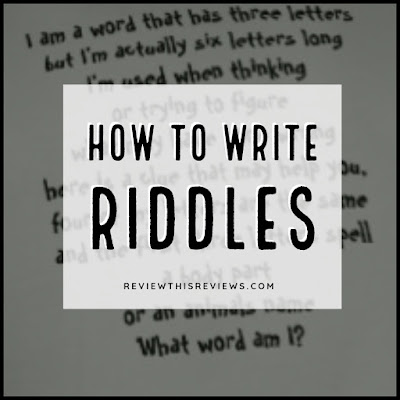 |
| A Review of 6 Tips on How You Can Write Your Own Riddles |
Have you ever written a riddle? It's a crazy knack I happen to have. Today, I'll share some of the riddles I've created with a few tips on how you can write your own.
Why Riddles?
Along with sayings for greeting cards, I've been writing riddles for most of my life. The ability to toss out one-liners is a genetic anomaly in my family. My dad could make people laugh on a dime; he was hilarious! That chip landed on my brother, who can toss out funny lines anywhere, any time.
The verbal skills possessed by my dad and brother transferred to me in writing form.
So why riddles? Here's why: This world is too serious right now, so to break up the constant barrage of negativity coming at us, I decided to create books about riddles, quotes, and sayings. But in this article, I'll be sharing some tips on how to write a riddle.
An Example of One of My Personally Written Riddles:
I am a word that has three letters,
but I'm actually six letters long,
I'm used when thinking or trying to figure
what may have gone wrong,
here is a clue that may help you,
four of my letters are the same,
and the first three letters spell a body part,
or an animal's name,
What word am I?
(Take a guess in the comment section - try not to peek at other comments in case they've guessed the answer correctly!)
How to Write a Riddle
1. Choose the Answer First
Start with the answer. Pick the word you want to write the riddle about, then go from there.
2. Choose a Word that Has Multiple Meanings or can be Expressed in Multiple Ways
Writing a riddle about a word with multiple meanings (spelled the same or spelled differently) is easier. For example, Aunt/Ant, Fly, Park, Plant. These types of words allow you to create the riddle from various angles.
Here's an example of one of my riddles with an answer that has multiple meanings:
It's said we all have one
those who believe never doubt,
that everyone is included,
no one is left out,
we also tell it to mean
"there's only one,"
and when it's spelled differently
we use it to run,
wait, don't be confused because
I'll give you some pity,
when spoken out loud
it's the name of a city,
What word am I?
3. It Doesn't Have to Rhyme
Some people can rhyme anything, and others, not so much. Your riddle will work either way. If you need to improve rhyming, write the riddle with a rhythm.
Here's an example of another of my riddles using rhythm:
You write them
you get them
you give them
you hate them
you love them
you dread them
you need them
but you probably
never ever want them
What am I?
4. It's Easier to Write Riddles About Things You Can't Physically See
Try writing a riddle using words representing the unseen, such as thoughts, ideas, gravity, love, grace, nasty, etc. Think 'invisible' - You get the picture.
5. Think About What People Can Relate to with the Word/Answer
When writing your riddle, think about how people relate to the word. For example, the riddle in point three above is obscure and can technically have more than one answer (although there is a specific answer to it).
In riddle two, the meanings are different, the answer is spelled multiple ways, and the clues are more specific. For example, the particular clues are: everyone has one, it means just one, you use it to run, it's the name of a city.
6. Test Your Riddles Out on Your Friends and Family
See how difficult it is for your people to answer; they're too complicated if they never solve them. Mix it up to create both easier riddles and more challenging riddles. For Thanksgiving, my family used my riddles for a fun after-dinner game. The game was to see who could solve them the fastest. It was comical to hear them yelling over each other.
If the above riddles are frustrating you, there's more where that came from here, and you'll also be guided to the riddle answers from that page.
Your Assignment:
Write a riddle with the answer, "Park" - have fun!
By the way, in my book (A Party Game #STUMPED), you'll find my riddle for the word "Park" on page 70 (it's riddle 56).
Tuesday, June 25, 2019
Spiral Notebooks Reviewed
Keyboard or Spiral Notebook?
 |
| Spiral notebooks come in handy for an author image courtesy of pixabay.com |
What I use my spiral notebooks for
The devil is in the details
Thursday, January 18, 2018
Hobby Time from the Review This! Contributors
January is known as National Hobby Month. The contributing writers here on Review This! each have their favorite ways to enjoy a relaxing pursuit and have written many reviews of various how-to books, crafting supplies and DIY tutorials, gardening tips, recipes & kitchen aids for the cook, photography lessons, reading or listening to music, sports, and a host of other hobbies.
These are but a few of the hobbies enjoyed by the Review This crew. The list of hobbies is almost endless. If you are interested in looking for what we writers here have reviewed, type in the name of your 'hobby' either in the box in the top left-hand corner of any Review This page, or in the search box down the right-hand side. By looking at the author's name, you won't have any problem figuring out which HOBBY is each writers' favorite! For instance, mine (Wednesday Elf) is crochet and my hobby is shared by several other contributors here, so we learn and share with each other. A more comprehensive list is shown below.
National Hobby Month
Begun by the Hobby Guild of America in 1955, National Hobby Month was celebrated in April until 1976, then in October until 1986. Since then, it has been celebrated during the month of January.
January was most likely chosen for National Hobby Month as it is the beginning of a new year and a good time to start a new hobby. Many people have never had hobbies during their working years or while raising a family and begin one in their retirement or after the children are grown. Others try many hobbies throughout their life before finding one or two that gives them the most enjoyment.
Hobby Examples on Review This!
Hobbies can be passive (such as crafting, reading, writing, listening to music or watching a movie) or an activity such as gardening, cooking or participating in sports. Many people have more than one hobby and often combine them, such as listening to music while crafting.
In addition to writing reviews here on Review This!, most of the contributing writers here write for their own blogs and websites. Writers consider writing to be more work than hobby, so time away from writing is important. That's where the activities done in our leisure time become such a pleasure. It is also interesting to note that the passion we feel for our hobbies is shown in many of the subjects we write about.
- Barbara Tremblay Cipak (Brite-Ideas) is crazy about country music and frequently writes about the artists and their music she is so passionate about. She is also loves to experiment with color in home décor.
- Dawn Rae does crochet and participates in a group of fellow jeep owners. She also enjoys gardening and lately 'learning about homesteading'.
- Cynthia Sylvestermouse is a freelance writer and photographer who loves all different kinds of crafts, including crafting in the kitchen, creating fancy cakes and cupcakes.
- Barbara (BarbRad) is an expert on books and loves to read. She is also a nature photographer who most enjoys photographing her central California area.
- Mary Beth Granger (MBGphoto) is a fabulous photographer who continually takes photography classes to learn more. Photography has become her passion in her retirement, along with traveling. Lighthouses and beaches are her favorite subjects.
- Wednesday Elf loves crochet and needlework, watching baseball and reading.
- Beverly Owens is busy researching her Native American Indian heritage and loves to write about spirit animals and the wisdom of her ancestors. She also enjoys crocheting.
- Olivia Morris loves gardening and following the fashion world.
- Brenda Little (Treasures By Brenda) collects coffee mugs and researches the history of vintage cups and other vintage items which she shares in her eBay store. She also loves reading, great movies, cooking, and pop culture.
- Diana Wenzel (Renaissance Woman2010) enjoys an off-the-grid lifestyle where she pursues her interests in animal rescue, wonderful nature photography, and DIY projects. She also loves to read.
- Louanne Cox (Lou16) loves reading, 80s music, zombies and dolls, among a host of other interests.
- Heather Burns (Heather426) is an artist, illustrator and graphic designer. Her hobby is her artistic accomplishments, including the colored pencils she has created for coloring pages and coloring books.
- Coletta Teske is a published book author and loves to sew.
- Sam Monaco enjoys cooking and he has a passion for preserving old family recipes. These can be found on his blog Sam's Place. He also loves history.
- Jasmine Ann Marie Annie (Raintree Annie) loves gardening and nature. Her favorite hobby is photography and photographing the wildlife, animals and birds in nature.
These are just the highlights of hobbies and interests I have observed from the articles they publish and the interaction we have as a team here on the staff of Review This!. I am sure there are other interests each of them have.
Quick View Home Page
By clicking on the Quick View Home Page button at the top of any Review This! page, you will have weekly examples of many of the articles your hobbyists here enjoy (plus many non-hobby reviews).
Stop by the comments section and tell us your favorite hobby or activity. The Review This! staff would love to hear about what gives you pleasure in your leisure time.
(c) Written by Wednesday Elf on 1/20/2018
Tuesday, September 19, 2017
Reviewing A Thesaurus
A Most Important Tool For Writing
 |
| Writing Center image courtesy of Pixabay.com |
Certainly, we all have the option of looking up words (synonyms or antonyms) on an online thesaurus. Those have been available for quite a while. My preference is an actual book that I can pick up and search through quickly. I don't have to open a new window or switch screens. My writing is still in front of me and I can return to it swiftly. (I just used my thesaurus again choosing swiftly over quickly.) See how that works?
Personally, I think that if we encourage our young students to get into the habit of using this tool for their writing needs; we are also helping them practice searching for words in alphabetical order along with spelling skills. Adults will be better adept at this but even they learned at one time the order of the alphabet when looking a word up. Whether the writer is very young, middle-aged or even elderly their finished product will be a much better piece if they have taken a few minutes to find a variety of words to use in their text. Can anyone remember a paper returned from the teacher with several red marks and a note that says, "You used this word 15 times! Choose different words from time to time."
As a writer, it is my desire, to create a pleasant reading experience for anyone who might read what I have written. I don't want to sound repetitive or appear that I have a very small vocabulary. I think whether it is a conscious goal or not; most people who are writing something want it to be received well. A thesaurus can be invaluable for that very purpose.
It is probably no surprise that I think that giving a child a tool that will help them write better is a very good idea. They may not be looking to make a career out of writing but they will from time to time be required to write something. That "something" will be better if they know how to find synonyms to use to say the same thing in a different way. A by-product is that they will have a much better vocabulary.
As I stated before; I use my thesaurus regularly each day. I have found it extremely helpful as I work on my soon to be published mystery book.
Wednesday, June 7, 2017
Quick Flip Questions for Critical Thinking Charts: A Review
What Ever Happened to Critical Thinking in Education?
 |
| Top Selling Critical Thinking Aid for Students, Educators, Writers, and Speakers Collage of my scans edited on PicMonkey |
When I Was Still Selling Teaching Resources Directly, This Flew Off My Shelves and I Shipped It All Over the Country.
Why is this inexpensive little chart so valuable to educators?
 This handy chart, which is easily held in one hand, started a stampede of educators to get it because it took the work of Benjamin Bloom and made it easy to understand and refer to. Quick Flip Questions for Critical Thinking was the work of Linda G. Barton, who based it on the original Bloom’s Taxonomy.
This handy chart, which is easily held in one hand, started a stampede of educators to get it because it took the work of Benjamin Bloom and made it easy to understand and refer to. Quick Flip Questions for Critical Thinking was the work of Linda G. Barton, who based it on the original Bloom’s Taxonomy. This Mug Will Remind You or Someone Else to Think Critically
Do you know someone who needs it?
A New Flip Chart Appears
There is nothing new in this updated version. The words for the headings have been changed, but "Creating" has the same material as "Synthesis" had in the original version, and everything else that appears different is just in a different order. The levels of the cognitive domain of learning have been divided by the authors into these levels: Remembering, Understanding, Applying, Analyzing, Evaluating, and Creating.
Either of these handy resources helps one improve thinking skills at any age with the flip of a page. Either is an indispensable tool that helps teachers write lesson plans, master Bloom's Taxonomy, and develop higher levels of thinking. It will help students develop analytic skills. They will learn to ask their teachers the right questions and to see through some of the nonsense they will find in their social media feeds.
How to Use the Flip Charts at Home
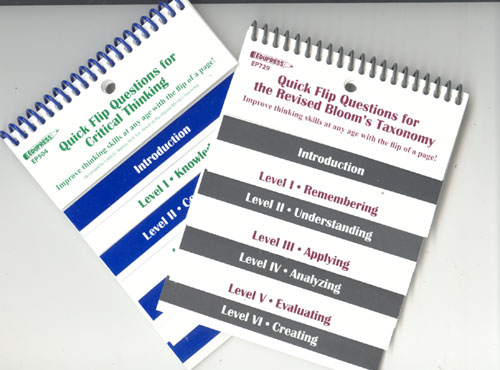 |
| You Can Even Use the Flip Charts at Home Photo © B. Radisavljevic |
There are many ways to use the flip charts in families. They can even help improve child/parent communication. There are both threatening and non-threatening ways to ask questions. If it's your words which put children in a defensive stance (not your tone of voice), this resource can help you frame your questions in a way that may not raise the same barriers to communication. (I would not hold the book in your hand for these encounters. Learn the most useful questions and keep them in your head.)
Homeschoolers will also find these charts valuable. I still like the original version best. Home educators should get a copy for each child of middle school age and older. When the parent assigns reading she can also have the children answer one or two Level IV-VI questions orally or in writing afterward. After the family watches a video, TV commercial, or show together, maybe one of these Level IV and VI Questions would be appropriate to discuss together at the end:
- How would you prove...? disprove?
- What choice would you have made?
- How is _____ related to...?
- What motive is there?
Why Not Get one of these Handy Critical Thinking Tools Now?
 Edupress EP-504 Questions for Critical Thinking Quick Flip Resource, 0.38
Edupress EP-504 Questions for Critical Thinking Quick Flip Resource, 0.38 Quick Flip Questions for the Revised Bloom's Taxonomy
Quick Flip Questions for the Revised Bloom's TaxonomyMost Recent Reviews on Review This Reviews
Search for Reviews by Subject, Author or Title
The Review This Reviews Contributors
 Sylvestermouse
Sylvestermouse Dawn Rae B
Dawn Rae B MbgPhoto
MbgPhoto Brite-Ideas
Brite-Ideas Wednesday Elf
Wednesday Elf Olivia Morris
Olivia Morris Treasures by Brenda
Treasures by Brenda The Savvy Age
The Savvy Age Margaret Schindel
Margaret Schindel Raintree Annie
Raintree Annie Lou16
Lou16 Sam Monaco
Sam Monaco
 Cheryl Paton
Cheryl Paton Renaissance Woman
Renaissance Woman BarbRad
BarbRad Bev Owens
Bev Owens BuckHawk
BuckHawk Decorating for Events
Decorating for Events Heather426
Heather426 Coletta Teske
Coletta Teske MissMerFaery
MissMerFaery Mickie_G
Mickie_G
Review This Reviews is Dedicated to the Memory of Our Beloved Friend and Fellow Contributor
We may be apart, but
You Are Not Forgotten






